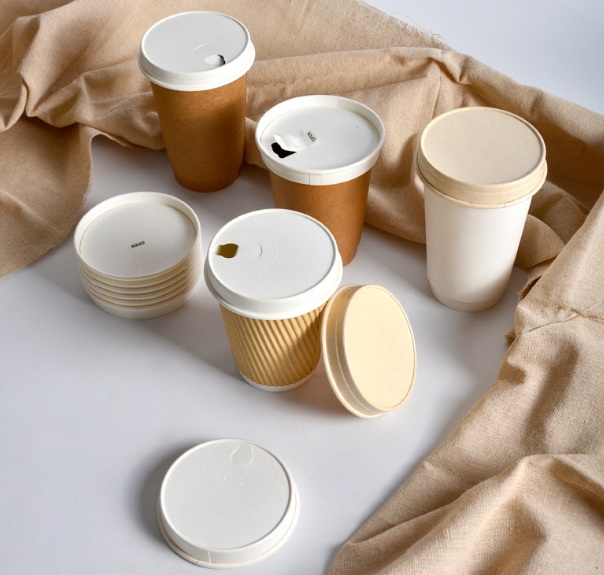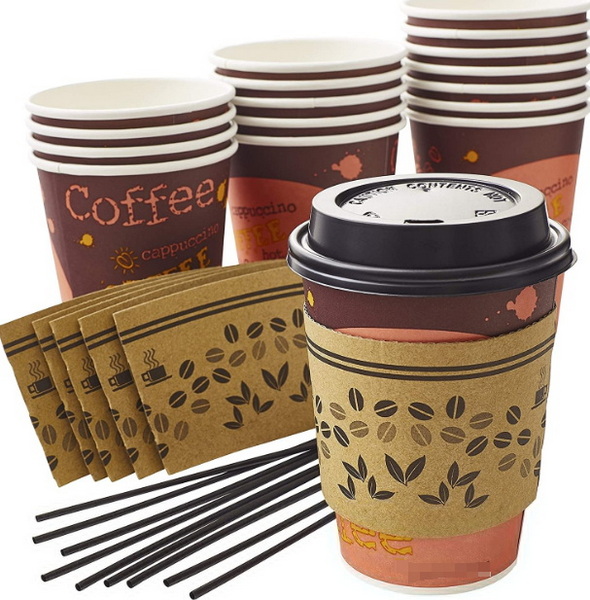
Content Menu
● Introduction to Disposable Cup Lids
>> Types of Disposable Cup Lids
● Recycling Disposable Cup Lids
>> Challenges in Recycling
>> Solutions for Recycling
● Composting Disposable Cup Lids
>> Challenges in Composting
>> Solutions for Composting
● Eco-Friendly Alternatives
● Market Trends and Innovations
>> Sustainable Materials
>> Emerging Technologies
● Consumer Awareness and Regulatory Pressures
>> Impact of Regulations
● Future Directions
>> Emerging Trends
● Conclusion
● FAQs
>> 1. Can All Disposable Cup Lids Be Recycled?
>> 2. How Do I Recycle Disposable Cup Lids?
>> 3. Can Bioplastic Lids Be Composted at Home?
>> 4. What Are the Benefits of Using Reusable Lids?
>> 5. How Can Businesses Promote Sustainable Practices for Disposable Cup Lids?
● Citations:
Disposable cup lids, often overlooked in discussions about environmental sustainability, play a significant role in the broader context of waste management and recycling. These lids, typically made from various types of plastics, paper, or bioplastics, contribute to the vast amount of waste generated by single-use cups. In this article, we will explore the recyclability and compostability of disposable cup lids, examining the different materials used, the challenges faced in recycling and composting, and potential eco-friendly alternatives.

Introduction to Disposable Cup Lids
Disposable cup lids are ubiquitous in modern life, used daily by millions worldwide. They are designed to prevent spills and maintain the temperature of beverages, but their convenience comes at an environmental cost. The most common types of disposable cup lids are made from polystyrene (PS), polypropylene (PP), and bioplastics like polylactic acid (PLA).
Types of Disposable Cup Lids
1. Polystyrene Lids (PS or PIC 6): These are lightweight and inexpensive but have been phased out in some regions due to environmental concerns. Polystyrene is difficult to recycle and often ends up in landfills or as litter.
2. Polypropylene Lids (PP or PIC 5): More durable than polystyrene, polypropylene lids are also widely used. They can be recycled but often are not due to contamination and sorting challenges.
3. Bioplastic Lids (PLA): Made from renewable resources like corn starch, these lids are compostable under specific conditions. However, they require industrial composting facilities, which are not universally available.
4. Paper-Based Lids: These are made from materials like recycled kraft paper or bagasse and are both recyclable and compostable.
5. Sugarcane Bagasse Lids: These are crafted from bagasse, the fibrous residue left after extracting juice from sugarcane stalks. They are 100% biodegradable and compostable, offering a sustainable alternative to traditional plastic lids[2].
Recycling Disposable Cup Lids
Recycling disposable cup lids is challenging due to their small size and the variety of materials used. Most kerbside recycling programs do not accept plastic cup lids because they are difficult to sort and process. However, some specialized programs like Simply Cups in Australia allow for the recycling of certain types of plastic lids at participating locations.
Challenges in Recycling
- Sorting and Contamination: Lids are often mixed with other plastics, making them hard to sort correctly. Food residue can also contaminate the recycling stream.
- Lack of Infrastructure: Many areas lack the facilities to recycle specific types of plastic lids efficiently.
Solutions for Recycling
1. Specialized Recycling Programs: Initiatives like Simply Cups provide dedicated recycling options for plastic lids.
2. Community Engagement: Educating consumers about proper disposal and recycling practices can improve recycling rates.
Composting Disposable Cup Lids
Composting is an option for bioplastic lids made from materials like PLA. However, these lids require industrial composting facilities to break down properly.
Challenges in Composting
- Limited Facilities: Industrial composting facilities are not widely available, making it difficult for consumers to compost bioplastic lids correctly.
- Contamination Risk: If not collected and processed correctly, bioplastics can contaminate other waste streams.
Solutions for Composting
1. Industrial Composting Facilities: Increasing access to these facilities can improve the composting of bioplastic lids.
2. Education and Labeling: Clear labeling and consumer education can help ensure bioplastics are disposed of correctly.

Eco-Friendly Alternatives
To reduce the environmental impact of disposable cup lids, several eco-friendly alternatives are emerging:
1. Reusable Lids: Products like Lydy offer reusable lids that can be used with takeaway cups, reducing waste significantly.
2. Compostable Materials: Using compostable materials for lids can reduce landfill waste if properly composted.
3. Paper-Based Options: Paper lids are both recyclable and compostable, offering a sustainable choice.
4. Sugarcane Bagasse Lids: These are 100% biodegradable and compostable, providing a sustainable alternative to traditional plastic lids. They are heat-resistant and suitable for hot beverages[2].
5. Biobased and Home Compostable Lids: Innovations like OrganoClick's biobased binders offer high-performing, sustainable packaging solutions that reduce carbon footprints significantly[8].
Market Trends and Innovations
The cups and lids market is witnessing significant growth driven by consumer demand for eco-friendly products. Product innovation is a key trend, with companies focusing on high-quality materials, customizable designs, and smart packaging[1]. For instance, SOFi launched a 100% biodegradable cup that eliminates the need for a plastic lid, using spunlace cotton that biodegrades naturally[1].
Sustainable Materials
- Sugarcane Bagasse: This material is gaining popularity for its biodegradable and compostable properties, reducing plastic waste effectively[2].
- Bioplastics: PLA and other bioplastics offer sustainable alternatives but require proper composting facilities[3].
- Paper and Bamboo: These materials are biodegradable and compostable, providing eco-friendly options for disposable cups and lids[3].
Emerging Technologies
- Dry-Moulded Fibre Products: Technologies like PulPac's fibre-forming method are reducing the environmental impact of packaging by using less energy and water[8].
- Aqueous Coatings: Water-based coatings are being used in paper cups to enhance compostability and reduce material usage[5].
Consumer Awareness and Regulatory Pressures
Consumer awareness about environmental issues is driving demand for sustainable packaging solutions. Regulatory pressures, especially in regions like Europe, are pushing businesses to adopt eco-friendly materials and practices[7]. The EU Single-Use Plastics Directive and similar regulations are influencing market dynamics by encouraging the use of biodegradable and compostable materials[2].
Impact of Regulations
- Reduced Plastic Use: Stricter regulations on single-use plastics are leading to increased adoption of sustainable alternatives.
- Market Growth: The demand for eco-friendly cups and lids is driving market growth in regions with strong environmental policies.
Future Directions
Eco-friendly disposable cup technology is developing rapidly, with innovations focusing on reducing environmental impact. Designs without plastic are becoming more popular, using recycled paper and plant-based polymers[3]. The use of aqueous linings instead of PE and PLA coatings is a notable advancement, improving safety and environmental friendliness[3].
Emerging Trends
- Sustainability Focus: Bioplastics, plant-based materials, and compostable cups are gaining traction.
- Personalization and Branding: Advanced printing techniques allow for customized cups and lids for marketing and brand recognition[4].
- Reusable Hybrids: Disposable cups with reusable features balance convenience and sustainability[4].
Conclusion
Disposable cup lids pose significant environmental challenges due to their widespread use and difficulty in recycling and composting. However, by adopting eco-friendly alternatives and improving recycling and composting infrastructure, we can reduce the impact of these lids. Consumer education and innovative solutions are key to creating a more sustainable future for disposable cup lids.

FAQs
1. Can All Disposable Cup Lids Be Recycled?
- Answer: Not all disposable cup lids can be recycled. While some plastic lids can be recycled through specialized programs, many are not accepted by standard kerbside recycling due to sorting and contamination issues.
2. How Do I Recycle Disposable Cup Lids?
- Answer: Check if your local council or nearby stores offer specialized recycling programs for plastic lids. Programs like Simply Cups in Australia provide dedicated recycling options.
3. Can Bioplastic Lids Be Composted at Home?
- Answer: No, bioplastic lids made from PLA require industrial composting facilities to break down properly. They should not be composted at home.
4. What Are the Benefits of Using Reusable Lids?
- Answer: Reusable lids reduce waste significantly by eliminating the need for disposable lids. They are also cost-effective in the long run and promote sustainability.
5. How Can Businesses Promote Sustainable Practices for Disposable Cup Lids?
- Answer: Businesses can promote sustainability by using eco-friendly materials for lids, implementing recycling programs, and educating consumers about proper disposal practices.
Citations:
[1] https://www.thebusinessresearchcompany.com/report/cups-and-lids-global-market-report
[2] https://www.greenolives.com.cn/sugarcane-bagasse-cup-lids-eco-friendly/
[3] https://gmz.ltd/5-best-eco-friendly-disposable-cups-lesser-known/
[4] https://www.promarketreports.com/reports/disposable-cups-lids-market-26308
[5] https://www.biopak.com/uk/about/home-compostable-cups-and-lids
[6] https://www.limepack.eu/blog/paper-cups-en/choosing-the-best-sustainable-paper-cups
[7] https://markwideresearch.com/cups-and-lids-market/
[8] https://www.innovationintextiles.com/cellulosic-solution-for-coffee-cup-lids/
[9] https://www.linkedin.com/pulse/plastic-free-paper-cups-perfect-eco-friendly-alternative-alvin-chen-qoqbc
[10] https://mtpak.coffee/2025/02/recyclable-to-go-cups-with-lids/
[11] https://www.planetfriendlypackaging.com.au/blog/revolutionising-disposable-cups-biopaks-sustainable-solutions
[12] https://wwf.org.au/blogs/10-worst-single-use-plastics-and-eco-friendly-alternatives/
[13] https://mtpak.coffee/2025/01/disposable-takeaway-coffee-cups-waste/
[14] https://shopequo.com/blogs/blog/disposable-to-go-cups-with-lids
[15] https://mtpak.coffee/2024/02/takeaway-coffee-cups-which-lids-are-best/
[16] https://www.innopak.com/blog/2025-trends-in-packaging/
[17] https://www.vegware.hk/hk/page/news-2021/
[18] https://www.biopak.com/au/cups/cold-cups/cold-cup-lids
[19] https://cupprint.com/2025-coffee-trends-sustainability-innovation-and-custom-cups-by-cup-print/
[20] https://www.ubereats-greenpackaging.com/products/paper-lids-for-cups

















